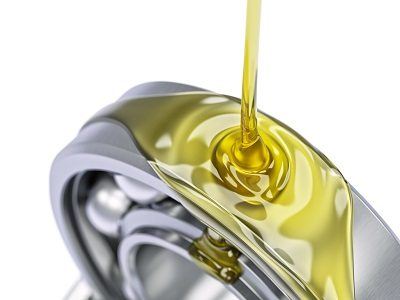Wheel bearings turn at high speed. A good quality wheel grease has a very refined design, allowing for minimal friction and maximum longevity. Yet, wheel-bearing grease is always necessary.
Grease should be packed into the wheel bearing and the following areas:
- The housing
- The wheel end’s inside surfaces (where the bearing sits)
- The cavity surrounding the bearing
Wheel grease provides lubrication and prevents corrosion. Without wheel bearing grease, the bearing and the areas around it can rust, affecting the bearing’s performance.
Let’s start with what wheel grease is. It’s not just oil. It’s a combination of different ingredients:
- Oil such as:
- Mineral oil, vegetable oil, or synthetic oil
- Soap
- This thickens the oil enough to give it a grease-like consistency
- The soap is non-detergent soap but rather made from fatty acids with anti-corrosive properties
- Additives such as:
- Anti-corrosion additives
- Water-resistant additives
- Anti-wear additives
Each wheel bearing type and brand has its blend of ingredients.
Synthetic vs. Conventional Wheel Grease: Which Type Should You Get?
In the old days, only one type of oil was being used in wheel grease. It was petroleum-based oil, commonly known as mineral oil. Now, you will see synthetic oil in more and more wheel-bearing grease formulas. It’s no surprise, because:
- Synthetic oil is less expensive than mineral oil
- Costs of synthetic grease ingredients haven’t risen as fast as mineral oil-based ingredients
- Synthetic oil offers more benefits than mineral oil
- Better heat resistance
- Longer life
- Less friction
If you ask an expert, they will say synthetic oil-based grease is the way to go.
Different types of wheel grease
General Multi-Purpose Grease
General multi-purpose grease is made with calcium sulfonate. You can use it on a variety of applications, including:
- Drum brake wheel bearings
- Chassis components
This type of grease is resistant to water. Yet, it doesn’t perform well under high temperatures, and that’s why you should never use this grease on high-temperature applications.
High-Temperature Multi-Purpose Grease
This silicone-based multi-purpose grease is suitable for high-temperature applications. The presence of silicone helps this grease stay stable under high temperatures, and it also protects the grease from other elements commonly exposed to wheel bearings. This type of grease also performs well in applications that don’t generate high temperatures, and it’s more versatile than general multi-purpose grease.
Moly-Grease
Moly-grease is a type of grease that contains molybdenum, an anti-wear additive. Some automakers’ wheel bearings require moly-grease because the grease provides higher-pressure protection for the metal. Check the owner’s manual to determine which type of wheel bearing grease the automaker recommends for the vehicle.
Marine Grease
Marine grease is ideal for boats, boat trailers, and other vehicles dunked in water, and marine grease is loaded with water resistance additives. Bearing grease, in general, comes with soap, but soap can be water-soluble. So you want to make a point to use marine grease if you know your bearings will see a lot of water.
Why You Should Not Mix Different Types Of Wheel Bearing Grease
You can mix some oils used in bearing grease. For example, plant-based oil and petroleum-based oil can mix freely with each other. If you want to know if the new bearing wheel grease will mix well with the old bearing grease, you can do some research.
The best way to ensure that the old grease doesn’t mix with the new grease is to replace the grease. That means thoroughly removing the old grease before packing the new grease into the wheel bearings. Here are some liquids you can use to clean out the old grease:
- Turpentine
- Paint thinner
- Kerosene
- Hot soapy water
- Brake cleaner
In some situations, it can be hard to remove the old grease. If you can’t do it, that’s OK. Just make sure the wheel grease you used before is the same as the one you will be using. You can try to pump out the old grease with the new grease using a grease gun, and the new grease will push out the old grease.
Picking the best grease can be challenging, especially if you don’t know what you should be looking for. That’s where you should consider the tips about grease mentioned above.


















